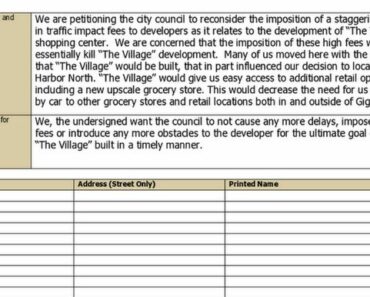Writing a petition letter is a powerful way to bring attention to an issue or cause and to gather support from others who share your concerns. Whether you’re advocating for a change in your community, addressing a problem at work, or seeking justice on a larger scale, a well-crafted petition letter can have a significant impact. In this guide, I will provide you with a comprehensive overview of how to write a petition letter effectively.
- Introduction
- Start with a strong and compelling opening statement that grabs the reader’s attention. Clearly state the purpose of your petition and briefly explain why it is important.
- Provide relevant background information to help the reader understand the context of the issue. Include facts, statistics, or personal anecdotes that support your cause.
- Clearly state your goals and objectives. What specific outcome or action are you seeking? Make it clear and concise.
- Problem Statement
- Describe the problem or issue in detail. Use persuasive language to highlight the significance and urgency of the matter. Provide evidence, examples, or personal experiences to illustrate the impact on individuals or the community.
- Clearly identify the parties responsible for the problem. This could be individuals, organizations, or institutions. Ensure that your claims are accurate and supported by evidence.
- Explain the negative consequences resulting from the problem. Outline how it affects the lives of people, the environment, or any other relevant aspect.
- Proposed Solution
- Present your proposed solution or course of action. Describe how it addresses the problem identified in the previous section.
- Provide a well-reasoned argument for why your solution is effective, feasible, and beneficial. Use evidence, expert opinions, or successful precedents to strengthen your case.
- Anticipate and address potential counterarguments or concerns that may be raised. Show that you have considered alternative perspectives and explain why your solution is the most appropriate.
- Supporting Arguments
- Develop your arguments in support of your proposed solution. Each argument should be presented in a separate paragraph.
- Provide evidence, data, expert opinions, or relevant research to support each argument. Use credible sources and cite them appropriately.
- Make your arguments compelling and persuasive by appealing to logic, emotions, or morality. Connect with the reader on a personal level and demonstrate the broader impact of the issue.
- Call to Action
- Clearly state what you want the reader to do. This could be signing the petition, supporting your cause, or taking specific actions.
- Provide instructions on how to take action. Include links to online petitions, contact information of relevant individuals or organizations, or details about upcoming events or demonstrations.
- Emphasize the importance of collective action and the power of individuals coming together to effect change. Encourage the reader to share the petition with others who may be interested.
- Conclusion
- Summarize the key points of your petition letter.
- Restate the urgency and importance of the issue.
- Thank the reader for their time and consideration.
- Proofreading and Editing
- Review your petition letter for clarity, coherence, and grammar.
- Ensure that your arguments are well-supported and logically organized.
- Seek feedback from others to get different perspectives and improve your letter.
Remember, the word count provided for each section is approximate and can be adjusted based on the specific nature of your petition. The most important aspect of writing a petition letter is to clearly communicate your message, engage the reader, and inspire them to take action. Good luck with your petition!





